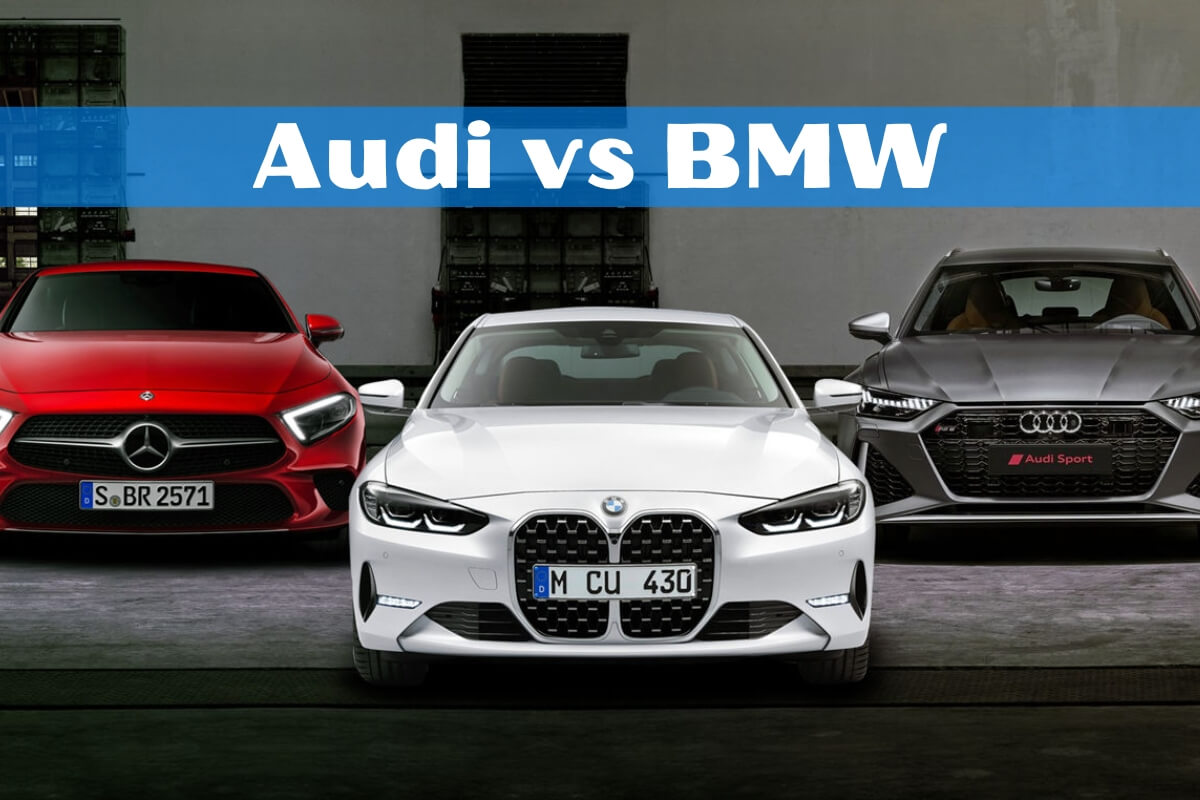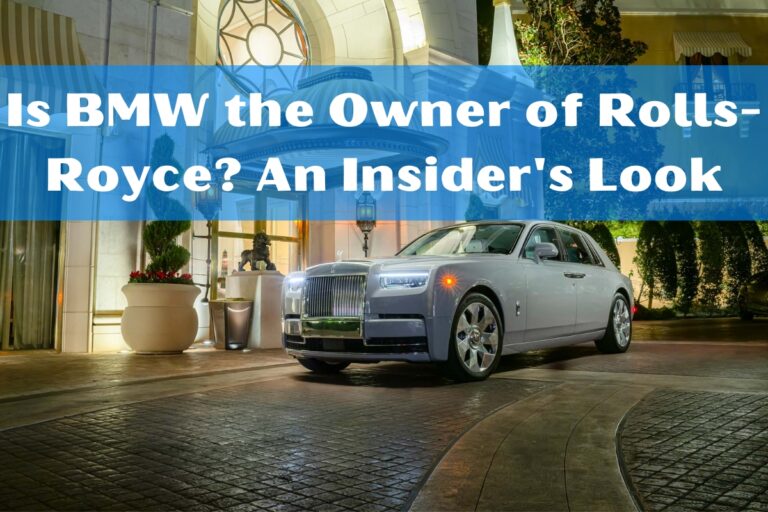Audi vs BMW: Which Luxury German Brand Suits You Best?

Are you torn between Audi and BMW when searching for your next luxury vehicle? Deciding between these two iconic German brands can be a daunting task. Both offer a prestigious lineup of high-performance cars, SUVs, and crossovers packed with cutting-edge technology and premium amenities.
Audi and BMW are two luxury car brands with distinct strengths and weaknesses. To help you choose between them, we’ll explore their key differences in a clear and concise way
Performance Comparison: Audi vs BMW
When it comes to performance, both Audi and BMW are renowned for their powerful engines, agile handling, and exhilarating driving dynamics. However, each brand takes a slightly different approach.
BMW is famous for its sporty rear-wheel-drive platforms and precise steering, delivering a truly engaging driving experience. Their engines, often turbocharged, are tuned for immediate throttle response and thrilling acceleration. Models like the M3 and M5 are purpose-built for enthusiasts seeking pure adrenaline.
On the other hand, Audi’s performance philosophy revolves around their legendary Quattro all-wheel-drive system. While not as razor-sharp as BMWs, Audis offer tremendous grip and stability, making them excellent all-weather performers. Their engines prioritize smoothness and refinement over outright power delivery.
Need for Speed? BMW Typically Edges Out Audi
If straight-line speed is your top priority, BMW’s high-revving engines and rear-wheel-drive dynamics give them a slight edge over their Audi counterparts. Take the BMW M5 Competition, for instance – its 4.4L twin-turbo V8 churns out a staggering 617 hp, rocketing it from 0-60 mph in just 3.1 seconds.
That said, Audi’s aren’t slouches by any means. The RS7 Sportback’s 4.0L twin-turbo V8 makes a mighty 591 hp and hits 60 mph in 3.5 seconds. And let’s not forget the iconic R8 supercar with its sonorous naturally-aspirated V10.
Interior Design and Features: Audi vs BMW
Stepping inside an Audi or BMW cabin is an exercise in modern luxury. Both brands prioritize meticulous craftsmanship, premium materials, and cutting-edge technology. However, their interior philosophies differ subtly.
Audi interiors exude a sophisticated, minimalist aesthetic with sleek lines and masterful attention to detail. The layout is clean and uncluttered, with a focus on user-friendly tech like the slick MMI infotainment system. Surfaces are trimmed in rich leathers, wood veneers, and brushed metal accents.
In contrast, BMW takes a slightly more driver-focused approach with a cockpit-style layout. The control interfaces, while tech-laden, retain an abundance of physical buttons and knobs for ease of use. You’ll find sportier designs, bolder trims like carbon fiber, and a wide range of customization options.
Space and Practicality: Audi Gets the Slight Nod
When it comes to interior packaging and everyday usability, Audi models tend to offer a bit more rear legroom and cargo versatility compared to their BMW counterparts. The Q7, for instance, boasts a generous 35 cubic feet of cargo space behind the second row.
That’s not to say BMWs are cramped – the X5’s 33.9 cubic feet is still quite spacious. But if moving people and gear regularly is a priority, Audi’s spacious cabins could be the smarter choice.
Exterior Styling and Design: Audi vs BMW
Audi and BMW both possess instantly recognizable and iconic design languages that reflect their respective brand philosophies. Audi’s “Tornado Line” styling cues, along with the imposing Singleframe grille, exude a low-slung, wide-bodied muscularity. Meanwhile, the crisp character lines and sculpted surfaces lend an elegant, aerodynamic flair.
BMWs, on the other hand, cut a decidedly aggressive, athletic stance with their signature twin-kidney grilles and muscular haunches. Models like the 8 Series and X6 boast a rakish, extroverted styling that immediately commands attention on the road.
Body Styles Galore: Audi and BMW Lineups Have You Covered
From sleek sport coupes and convertibles to versatile SUVs and crossovers, both Audi and BMW offer a rich selection of body styles to suit any lifestyle.
Audi’s portfolio includes the compact A3 sedan and hatchback, the elegant A6 mid-sizer, and the flagship A8 luxury sedan. Their SUV range covers everything from the subcompact Q3 to the full-size Q8.
Similarly, BMW has hatches like the 2 Series, the iconic 3 Series sport sedan, all the way up to the plush 7 Series. Crossover offerings include the X3, X5, and the head-turning X6 “Sport Activity Coupe.”
Safety and Reliability: Audi vs BMW
When it comes to safety ratings and reliability, both Audi and BMW perform admirably, though BMW tends to have a slight edge according to independent assessors like J.D. Power.
Most Audi and BMW models earn the coveted 5-star safety rating from NHTSA and are considered “Top Safety Picks” by IIHS. Both automakers pack their vehicles with a robust suite of driver aids like automatic emergency braking, lane-keeping assist, and blind-spot monitoring.
However, BMW outscores Audi in J.D. Power’s Vehicle Dependability Study, with more BMW models receiving “better than most” reliability verdicts. Common Audi trouble spots include excessive oil consumption and electrical issues.
That said, no vehicle is immune to defects. Checking recall databases and extended warranties could provide extra peace of mind for either brand.
Maintenance and Ownership Experience: Audi vs BMW
Let’s address the elephant in the room – the long-term maintenance and repair costs for European luxury brands like Audi and BMW can indeed get pricey compared to mainstream competitors.
According to vehicle ownership data, BMWs cost around $17,800 to maintain over the first 10 years, while the average Audi costs $12,400 for the same period. These figures include items like brake jobs, tire replacements, and scheduled service intervals.
However, most BMWs come with a generous 3-year/36,000-mile complimentary maintenance plan to ease the initial burden. Audi only covers the first service visit.
In terms of the dealership experience, most owners report satisfaction with both brands’ service departments and customer care initiatives. But it’s always wise to thoroughly research your local dealer’s reputation as well.
Audi vs BMW: The Verdict
Objectively speaking, there is no clear “winner” between Audi and BMW. These two German titans each bring their unique flavors of performance, luxury, and prestige to the table.
If you prioritize razor-sharp handling, communicative steering, and an engaging driving experience above all else, BMW’s rear-wheel-drive dynamics could give you that extra thrill.
However, if all-weather capability and a buttery smooth ride are more important, Audi’s Quattro prowess may be the better fit, especially if you live in areas with harsh winters.
At the end of the day, your individual lifestyle, priorities, and personal preferences should dictate your choice between these two fantastic luxury brands. The best advice is to experience both in person with thorough test drives before making your final decision.
No matter which way you go, you’ll be piloting a finely-crafted machine that blends world-class engineering, premium amenities, and iconic street presence. Happy driving!






